
Title stata.com
putdocx paragraph — Add text or images to an Office Open XML (.docx) file
Description Quick start Syntax Options
Remarks and examples Also see
Description
putdocx paragraph adds a new paragraph to the document. The newly created paragraph becomes
the active paragraph. All subsequent text or images will be appended to the active paragraph.
putdocx text adds text to the paragraph created by putdocx paragraph. The text may be a
plain text string or any valid Stata expression (see [U] 13 Functions and expressions).
putdocx textblock begin adds a new paragraph to which a block of text can be added.
putdocx textblock append appends a block of text to the active paragraph.
putdocx textblock end ends a block of text initiated by putdocx textblock begin or putdocx
textblock append.
putdocx textfile adds a block of preformatted text to a new paragraph with a predefined style.
putdocx pagenumber adds page numbers to a paragraph that is to be added to the header or
footer.
putdocx image embeds a Portable Network Graphics (.png), Joint Photographic Experts Group
(.jpg), Device-Independent Bitmap (.dib), Enhanced Metafile (.emf), Bitmap (.bmp), Tagged Image
File Format (.tif), or Scalable Vector Graphics (.svg) file in the active paragraph.
Quick start
Add a paragraph to the document with centered horizontal alignment
putdocx paragraph, halign(center)
Append the text “This is paragraph text.” to the active paragraph and format the text as bold
putdocx text ("This is paragraph text."), bold
Add a PNG image saved as myimg to the active paragraph
putdocx image myimg.png
Add content to the header myheading with the text “My Header ” followed by the page number
putdocx paragraph, toheader(myheading)
putdocx text ("My Header ")
putdocx pagenumber
Add a new paragraph containing the text between the two putdocx textblock commands
putdocx textblock begin
This paragraph is written as a block of text.
putdocx textblock end
Add file intro.txt to the document as a new paragraph
putdocx textfile intro.txt
Same as above, but append intro.txt to the active paragraph
putdocx textfile intro.txt, append
1

2 putdocx paragraph — Add text or images to an Office Open XML (.docx) file
Syntax
Add paragraph to document
putdocx paragraph
, paragraph options
Add text to paragraph
putdocx text (exp)
, text options
Add a paragraph with a block of text
putdocx textblock begin
, textblock options paragraph options
Append a block of text to the active paragraph
putdocx textblock append
, textblock options
End the block of text initiated with putdocx textblock begin or putdocx textblock append
putdocx textblock end
Add page number to paragraph (to be added to header or footer)
putdocx pagenumber
, text
options totalpages
Add a textfile as a block of preformatted text
putdocx textfile textfile
, append stopat(string
, stopatopt
)
Add image to paragraph
putdocx image filename
, image options
filename is the full path to the image file or the relative path from the current working directory. If
filename contains spaces, it must be enclosed in double quotes.
paragraph options Description
style(pstyle) set paragraph text with specific style
font(fspec) set font, font size, and font color
halign(hvalue) set paragraph alignment
valign(vvalue) set vertical alignment of characters on each line
indent(indenttype, #
unit
) set paragraph indentation
spacing(position, #
unit
) set spacing between lines of text
shad
ing(sspec) set background color, foreground color, and
fill pattern
toheader(hname) add paragraph content to the header hname
tofooter(fname) add paragraph content to the footer fname

putdocx paragraph — Add text or images to an Office Open XML (.docx) file 3
text options Description
∗
nformat(% fmt) specify numeric format for text
font(fspec) set font, font size, and font color
bold format text as bold
italic format text as italic
script(sub | super) set subscript or superscript formatting of text
strikeout strike out text
underline
(upattern)
underline text using specified pattern
shading(sspec) set background color, foreground color, and fill
pattern
linebreak
(#)
add line breaks after text
allcaps format text as all caps
∗
smallcaps format text as small caps
∗
hyperlink(link) add the text as a hyperlink
∗
bookmark(bmname) add the text as a bookmark named bmname
∗
bookmarklink(bmname) link the text to bookmark bmname
∗
trim remove the leading and trailing spaces in the text
∗
Cannot be specified with putdocx pagenumber.
textblock options Description
no
paramode specify whether blank lines signal new paragraphs;
default is noparamode
no
hardbreak specify whether spaces are added after hard line breaks;
default is nohardbreak
image options Description
width(#
unit
) set image width
height(#
unit
) set image height
linebreak
(#)
add line breaks after image
link insert link to image file
alt(text) add alternative text to be read by voice software
fspec is
fontname
, size
, color
fontname may be any valid font installed on the user’s computer. If fontname includes spaces,
then it must be enclosed in double quotes.
size is a numeric value that represents font size measured in points. The default is 11.
color sets the text color.

4 putdocx paragraph — Add text or images to an Office Open XML (.docx) file
sspec is
bgcolor
, fgcolor
, fpattern
bgcolor specifies the background color.
fgcolor specifies the foreground color. The default foreground color is black.
fpattern specifies the fill pattern. The most common fill patterns are solid for a solid color
(determined by fgcolor), pct25 for 25% gray scale, pct50 for 50% gray scale, and pct75 for
75% gray scale. A complete list of fill patterns is shown in Shading patterns of [RPT] Appendix
for putdocx.
color, bgcolor, and fgcolor may be one of the colors listed in Colors of [RPT] Appendix for putdocx;
a valid RGB value in the form ### ### ###, for example, 171 248 103; or a valid RRGGBB hex
value in the form ######, for example, ABF867.
upattern may be any of the patterns listed in Underline patterns of [RPT] Appendix for putdocx. The
most common underline patterns are double, dash, and none.
unit may be in (inch), pt (point), cm (centimeter), or twip (twentieth of a point). An inch is equivalent
to 72 points, 2.54 centimeters, or 1440 twips. The default is in.
Options
Options are presented under the following headings:
Options for putdocx paragraph
Options for putdocx text
Options for putdocx textblock begin
Options for putdocx textblock append
Options for putdocx pagenumber
Options for putdocx textfile
Options for putdocx image
Options for putdocx paragraph
style(pstyle) specifies that the text in the paragraph be formatted with style pstyle. Common values
for pstyle are Title, Subtitle, and Heading1. See the complete list of paragraph styles in
Paragraph styles of [RPT] Appendix for putdocx.
font(fontname
, size
, color
) sets the font, font size, and font color for the text within the
paragraph. The font size and font color may be specified individually without specifying fontname.
Use font("", size) to specify font size only. Use font("", "", color) to specify font color
only. For both cases, the default font will be used.
Specifying font() with putdocx paragraph overrides font properties specified with putdocx
begin.
halign(hvalue) sets the horizontal alignment of the text within the paragraph. hvalue may be left,
right, center, both, or distribute. distribute and both justify text between the left and
right margins equally, but distribute also changes the spacing between words and characters.
The default is halign(left).
valign(vvalue) sets the vertical alignment of the characters on each line when the paragraph contains
characters of varying size. vvalue may be auto, baseline, bottom, center, or top. The default
is valign(baseline).

putdocx paragraph — Add text or images to an Office Open XML (.docx) file 5
indent(indenttype, #
unit
) specifies that the paragraph be indented by # units. indenttype may
be left, right, hanging, or para. left and right indent # units from the left or the right,
respectively. hanging uses hanging indentation and indents lines after the first line by # inches
unless another unit is specified. para uses standard paragraph indentation and indents the first
line by # inches unless another unit is specified. This option may be specified multiple times in
a single command to accommodate different indentation settings. If both indent(hanging) and
indent(para) are specified, only indent(hanging) is used.
spacing(position, #
unit
) sets the spacing between lines of text. position may be before, after,
or line. before specifies the space before the first line of the current paragraph, after specifies
the space after the last line of the current paragraph, and line specifies the space between lines
within the current paragraph. This option may be specified multiple times in a single command to
accommodate different spacing settings.
shading(bgcolor
, fgcolor
, fpattern
) sets the background color, foreground color, and fill
pattern for the paragraph.
toheader(hname) specifies that the paragraph be added to the header hname. The paragraph will
not be added to the body of the document.
tofooter(fname) specifies that the paragraph be added to the footer fname. The paragraph will not
be added to the body of the document.
Options for putdocx text
nformat(% fmt) specifies the numeric format of the text when the content of the new text appended
to the paragraph is a numeric value. This setting has no effect when the content is a string.
font(fontname
, size
, color
) sets the font, font size, and font color for the new text within
the active paragraph. The font size and font color may be specified individually without specifying
fontname. Use font("", size) to specify the font size only. Use font("", "", color) to specify
the font color only. For both cases, the default font will be used.
Specifying font() with putdocx text overrides all other font settings, including those specified
with putdocx begin and putdocx paragraph.
bold specifies that the new text in the active paragraph be formatted as bold.
italic specifies that the new text in the active paragraph be formatted as italic.
script(sub | super) changes the script style of the new text. script(sub) makes the text a
subscript. script(super) makes the text a superscript.
strikeout specifies that the new text in the active paragraph have a strikeout mark.
underline
(upattern)
specifies that the new text in the active paragraph be underlined and
optionally specifies the format of the line. By default, a single underline is used.
shading(bgcolor
, fgcolor
, fpattern
) sets the background color, foreground color, and fill
pattern for the active paragraph. Specifying shading() with putdocx text overrides shading
specifications from putdocx paragraph.
linebreak
(#)
specifies that one or # line breaks be added after the new text.
allcaps specifies that all letters of the new text in the active paragraph be capitalized.
smallcaps specifies that all letters of the new text in the active paragraph be capitalized, with larger
capitals for uppercase letters and smaller capitals for lowercase letters.

6 putdocx paragraph — Add text or images to an Office Open XML (.docx) file
hyperlink(link) adds the text as a hyperlink to the webpage address specified in link.
bookmark(bmname) adds the text as a bookmark named bmname. You can link to this book-
mark from other text within a paragraph or from an expression in a table cell by using the
bookmarklink(bmname) option.
bookmarklink(bmname) adds the text as a link to the bookmark named bmname. Note that bookmark
links can point only to bookmarks in the current document. Additionally, these links cannot point
to bookmarks in documents to which you will be appending.
trim removes the leading and trailing spaces in the text.
Options for putdocx textblock begin
style(pstyle) specifies that the text in the paragraphs be formatted with style pstyle. Common values
for pstyle are Title, Subtitle, and Heading1. See the complete list of paragraph styles in
Paragraph styles of [RPT] Appendix for putdocx.
font(fontname
, size
, color
) sets the font, font size, and font color for the text within the
paragraphs. The font size and font color may be specified individually without specifying fontname.
Use font("", size) to specify font size only. Use font("", "", color) to specify font color
only. For both cases, the default font will be used.
Specifying font() with putdocx textblock begin overrides font properties specified with
putdocx begin.
halign(hvalue) sets the horizontal alignment of the text within the paragraphs. hvalue may be left,
right, center, both, or distribute. distribute and both justify text between the left and
right margins equally, but distribute also changes the spacing between words and characters.
The default is halign(left).
valign(vvalue) sets the vertical alignment of the characters on each line when the paragraphs contain
characters of varying size. vvalue may be auto, baseline, bottom, center, or top. The default
is valign(baseline).
indent(indenttype, #
unit
) specifies that the paragraphs be indented by # units. indenttype may
be left, right, hanging, or para. left and right indent # units from the left or the right,
respectively. hanging uses hanging indentation and indents lines after the first line by # inches
unless another unit is specified. para uses standard paragraph indentation and indents the first
line by # inches unless another unit is specified. This option may be specified multiple times in
a single command to accommodate different indentation settings. If both indent(hanging) and
indent(para) are specified, only indent(hanging) is used.
spacing(position, #
unit
) sets the spacing between lines of text. position may be before, after,
or line. before specifies the space before the first line of each paragraph in the text block, after
specifies the space after the last line of each paragraph, and line specifies the space between
lines within each paragraph. This option may be specified multiple times in a single command to
accommodate different spacing settings.
shading(bgcolor
, fgcolor
, fpattern
) sets the background color, foreground color, and fill
pattern for the paragraphs.
toheader(hname) specifies that the first paragraph in a text block be added to the header hname.
The first paragraph will not be added to the body of the document.
When you specify the paramode option with toheader(), all paragraphs after the first will be
added to the body of the document, not the header.

putdocx paragraph — Add text or images to an Office Open XML (.docx) file 7
tofooter(fname) specifies that the first paragraph in a text block be added to the footer fname. The
first paragraph will not be added to the body of the document.
When you specify the paramode option with tofooter(), all paragraphs after the first will be
added to the body of the document, not the footer.
noparamode and paramode specify whether blank lines within a block of text signal the beginning
of a new paragraph in the document. noparamode, the default, exports the block of text as a
single paragraph, removing any empty lines. paramode treats blank lines as an indication of a
new paragraph. When paramode is specified, the text following each blank line will begin a new
paragraph. The treatment of paragraphs within text blocks can also be specified by using set
docx paramode; see [RPT] set docx.
nohardbreak and hardbreak specify whether putdocx textblock inserts a space at the beginning
of lines or respects spaces exactly as they are typed. nohardbreak, the default, respects spaces
at the beginning and end of lines exactly as they are typed in the text block. The hardbreak
option inserts a space at the beginning of all nonempty lines, excluding the first line in the block
of text and the first line of each paragraph. Thus, hardbreak adds a space after the hard line
breaks in the text block. The treatment of spaces at line breaks can also be specified by using set
docx hardbreak; see [RPT] set docx.
Options for putdocx textblock append
noparamode and paramode specify whether blank lines within a block of text signal the beginning
of a new paragraph in the document. noparamode, the default, exports the block of text as a
single paragraph, removing any empty lines. paramode treats blank lines as an indication of a
new paragraph. When paramode is specified, the text following each blank line will begin a new
paragraph. The treatment of paragraphs within text blocks can also be specified by using set
docx paramode; see [RPT] set docx.
nohardbreak and hardbreak specify whether putdocx textblock inserts a space at the beginning
of lines or respects spaces exactly as they are typed. nohardbreak, the default, respects spaces
at the beginning and end of lines exactly as they are typed in the text block. The hardbreak
option inserts a space at the beginning of all nonempty lines, excluding the first line in the block
of text and the first line of each paragraph. Thus, hardbreak adds a space after the hard line
breaks in the text block. The treatment of spaces at line breaks can also be specified by using set
docx hardbreak; see [RPT] set docx.
Options for putdocx pagenumber
font(fontname
, size
, color
) sets the font, font size, and font color for the page numbers. The
font size and font color may be specified individually without specifying fontname. Use font("",
size) to specify the font size only. Use font("", "", color) to specify the font color only. For
both cases, the default font will be used.
Specifying font() with putdocx pagenumber overrides all other font settings, including those
specified with putdocx begin and putdocx paragraph.
bold specifies that the page numbers be formatted as bold.
italic specifies that the page numbers be formatted as italic.
script(sub | super) changes the script style of the page numbers. script(sub) makes the page
numbers subscripts. script(super) makes the page numbers superscripts.

8 putdocx paragraph — Add text or images to an Office Open XML (.docx) file
strikeout specifies that the page numbers have a strikeout mark.
underline
(upattern)
specifies that the page numbers be underlined and optionally specifies the
format of the line. By default, a single underline is used.
shading(bgcolor
, fgcolor
, fpattern
) sets the background color, foreground color, and fill
pattern for the page numbers. Specifying shading() with putdocx pagenumber overrides shading
specifications from putdocx paragraph.
linebreak
(#)
specifies that one or # line breaks be added after the page numbers.
allcaps specifies that the page numbers be capitalized; this only applies with the page number
formats lower letter, lower roman, cardinal text, and ordinal text.
totalpages specifies that the total number of pages be displayed, instead of the current number of
the page.
Options for putdocx textfile
append specifies that the text file be appended to the current paragraph, rather than being added as
a new paragraph.
stopat(string
, stopatopt
) specifies that only a portion of the text file be included, using the
specified string as the end point.
stopatopt must be one of contain, begin, or end. The default is contain, which matches the
string inside the line. begin matches the string at the beginning of the line. end matches the
string at the end of the line. If the line matches the string, the rest of the text file, including the
line, will not be included in the document.
Options for putdocx image
width(#
unit
) sets the width of the image. If the width is larger than the body width of the
document, then the body width is used. If width() is not specified, then the default size is used;
the default is determined by the image information and the body width of the document.
height(#
unit
) sets the height of the image. If height() is not specified, then the height of the
image is determined by the width and the aspect ratio of the image.
linebreak
(#)
specifies that one or # line breaks be added after the new image.
link specifies that a link to the image filename be inserted into the document. If the image is linked,
then the referenced file must be present so that the document can display the image.
alt(text) specifies alternative text for the image to be read by voice software.
Remarks and examples stata.com
Text, headers, footers, page numbers, and images are added to a .docx file via paragraphs. You
first create a paragraph and then append text and other content to it. A paragraph can be formatted
as a whole, and portions of the text within a paragraph can also be formatted individually.
To a paragraph, you can add valid Stata expressions, including strings, algebraic expressions, and
direct references to stored results using putdocx text. For lengthier additions, you can add blocks
of text using putdocx textblock. You can also insert preformatted text files in your .docx file with
putdocx textfile. With putdocx image, you can add images such as Stata graphs to a paragraph.
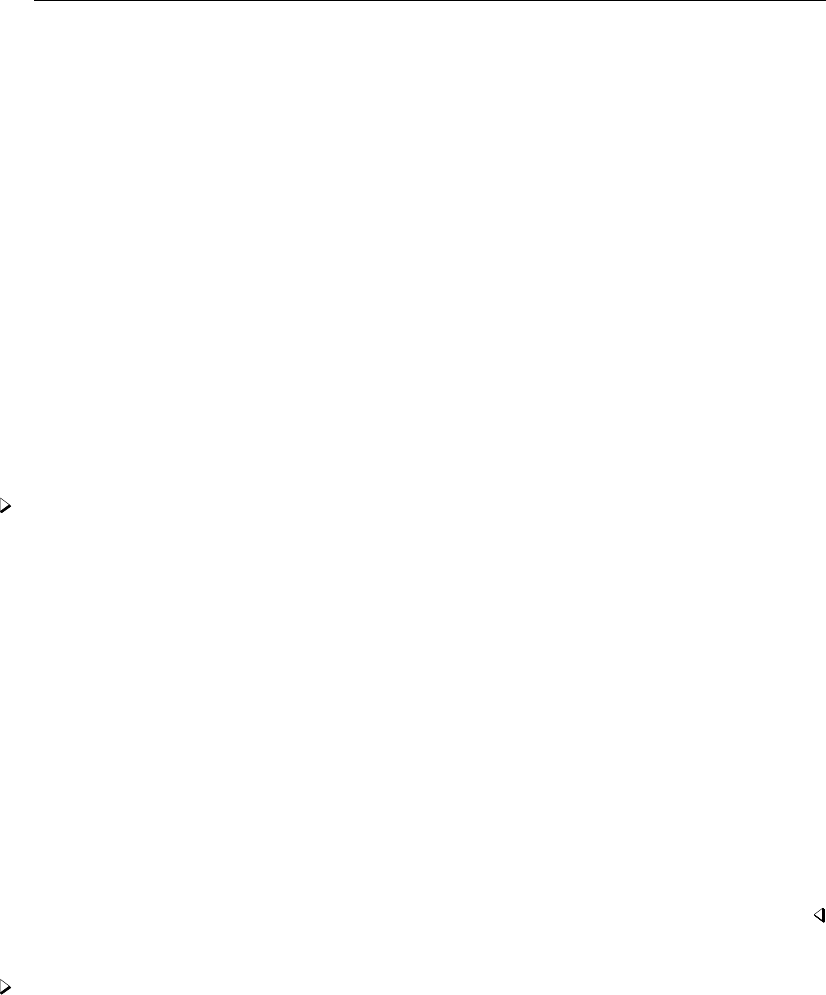
putdocx paragraph — Add text or images to an Office Open XML (.docx) file 9
With putdocx paragraph, you not only can add standard paragraphs to a document but also can
create, with the variety of formatting options available to customize paragraphs, a document complete
with a title, subtitle, headings, and headers and footers.
Remarks are presented under the following headings:
Adding a paragraph
Formatting text
Working with blocks of text
Adding an image to the document
Adding a bookmark to the document
Inserting text files in the document
Adding a paragraph
With each putdocx paragraph command we execute, we have the opportunity to format all the
text within the paragraph. For instance, we can specify font properties such as size and color along
with alignment, indentation, and line spacing.
Specifying putdocx paragraph without any options will create an active paragraph in the body
of the document. To instead add the paragraph content to a header or footer, use the toheader() or
tofooter() option.
Example 1: Add a title to the document
Suppose we want to create a report on some of the contributing factors to low birthweight and
save it in a file called bweight.docx. We use the Hosmer and Lemeshow dataset.
. use https://www.stata-press.com/data/r18/lbw
(Hosmer & Lemeshow data)
We must first create our document as described in [RPT] putdocx begin. Because we want to add
a header to our document, we specify the header() option, and we specify the font size for the
whole document.
. putdocx begin, header(bwtreport) font(, 14)
Now we create a paragraph to which we can append text or an image. Here we indicate that we
are adding a title, and then we use putdocx text to add the title itself.
. putdocx paragraph, style(Title)
. putdocx text ("Factors of low birthweight")
The paragraph will remain active until we add a new paragraph, a table, a section break, or a page
break (see [RPT] putdocx table and [RPT] putdocx pagebreak).
Example 2: Define the header content
Next we define the content of our header. To do so, we use the toheader() option, which places
the contents of the paragraph in the header rather than in the body of our document. We also include
page numbers in the header:
. putdocx paragraph, toheader(bwtreport)
. putdocx text ("Analysis of birthweight: ")
. putdocx pagenumber
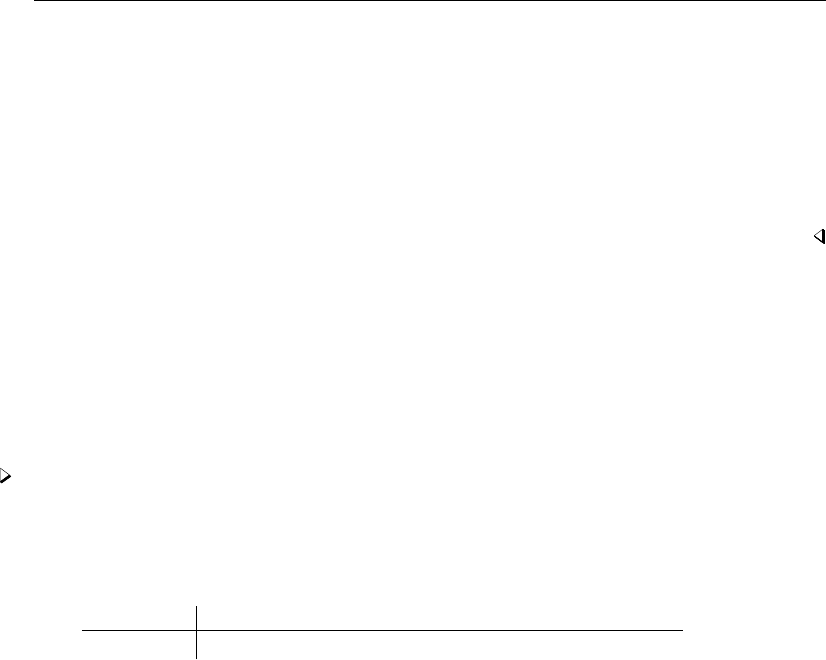
10 putdocx paragraph — Add text or images to an Office Open XML (.docx) file
Now that our file is set up with a title and header, we add some text to the body of our document.
In the next example, we will add a description of our dataset. Because the active paragraph is the one
with the header content, we need to start a new paragraph that does not use the toheader() option.
. putdocx paragraph
putdocx paragraph with no options will use your computer’s default font and the 14-point size
that we requested with our previous putdocx begin command. See Options for putdocx paragraph
for paragraph formatting options that can be specified to override defaults and settings specified in
putdocx begin.
Formatting text
In each putdocx text command, we can specify any valid Stata expression (see [U] 13 Functions
and expressions) including, but not limited to, a string of plain text. The expression can be formatted
using the Options for putdocx text, which would override the settings specified in putdocx paragraph
and putdocx begin.
Example 3: Format text individually
Suppose we want to write a description of lbw.dta to bweight.docx, including the number
of women in the dataset and the average birthweight in grams (bwt) for their infants. We use the
summarize command to get these descriptive statistics for the bwt variable.
. summarize bwt
Variable Obs Mean Std. dev. Min Max
bwt 189 2944.286 729.016 709 4990
We can use the results from summarize in the text we write. To see the available returned results,
we type return list. (See [P] return for more about stored results from Stata commands.)
. return list
scalars:
r(sum) = 556470
r(max) = 4990
r(min) = 709
r(sd) = 729.0160177275554
r(Var) = 531464.3541033434
r(mean) = 2944.285714285714
r(sum_w) = 189
r(N) = 189
We see that r(N) stores the number of observations and r(mean) stores the average birthweight.
Below, we create a paragraph containing this information and save the changes to our document.
. putdocx text (" We analyze a dataset with ‘r(N)’ women,")
. putdocx text (" and find an average birthweight of ")
. putdocx text ( r(mean)), nformat(%5.2f)
. putdocx text (" grams.")
. putdocx save bweight
successfully created "C:/mypath/bweight.docx"
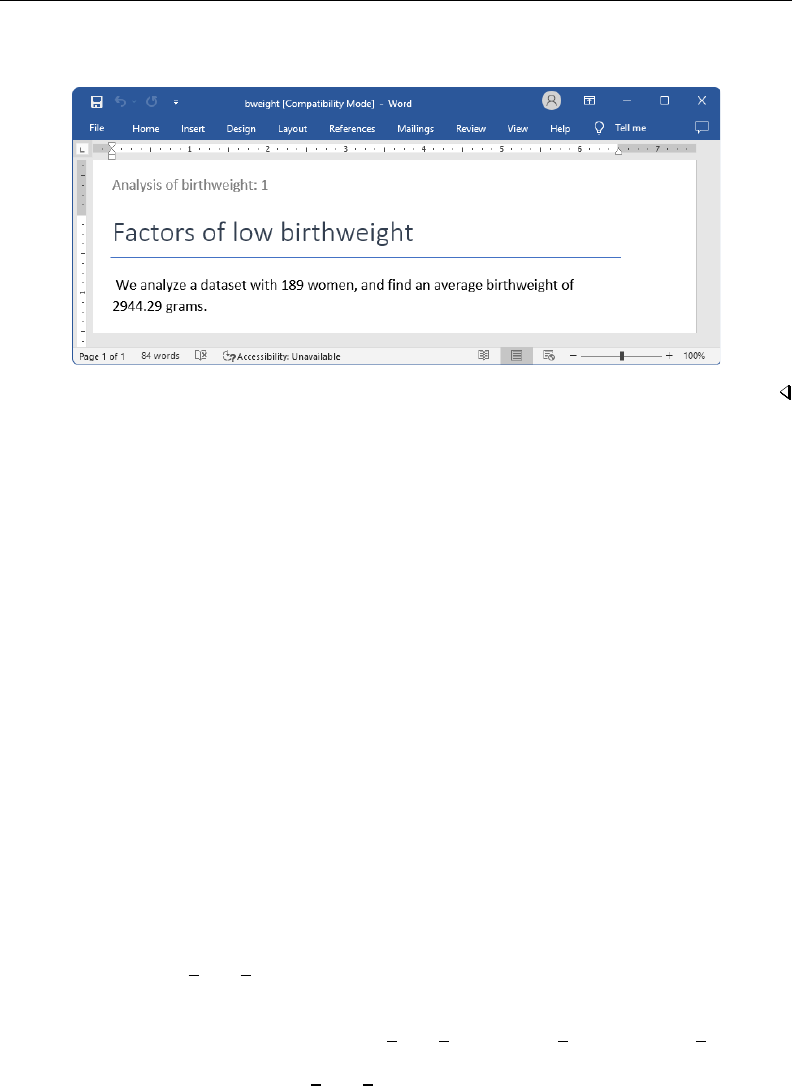
putdocx paragraph — Add text or images to an Office Open XML (.docx) file 11
Above, we formatted the mean birthweight to report only two digits after the decimal. The
bweight.docx file now looks like this:
Working with blocks of text
While putdocx text is great for customizing small bits of text, it is more efficient to use
the putdocx textblock commands when adding big blocks of text to your document. (Note that
the commands putdocx textblock begin and putdocx textblock append cannot be used
interactively.) To add a paragraph with a block of text to your document, simply enclose your text
between the putdocx textblock commands as follows:
putdocx textblock begin
... block of text to add
putdocx textblock end
To instead append a block of text to the active paragraph, use putdocx textblock append.
For example, continuing with the Hosmer and Lemeshow dataset, suppose we wanted to add more
details about the data. We might include a text block by typing the following:
putdocx textblock begin
We use data presented in Hosmer, Lemeshow, and Sturdivant (2013, 24).
These data record women’s demographics, such as age and race, and their medical
history, including whether they have a history of hypertension.
putdocx textblock end
Inserting a block of text does not limit us to using the same format throughout the block. Before
we include this text block in our document, we want to add a bit of text that is formatted differently
from the rest of the text block.
We can use the <<dd docx display>> dynamic tag within our text block to include Stata results
and modify the text style. This dynamic tag will execute Stata’s display command and then replace
the tag with its output. We can format the output by specifying any of the text options that are also
available with putdocx text. The entire <<dd docx display text option : display directive>>
tag must be contained on one line—there cannot be a line break within the tag. See [RPT] Dynamic
tags for more information on the <<dd docx display>> dynamic tag.

12 putdocx paragraph — Add text or images to an Office Open XML (.docx) file
Example 4: Formatting text within a block
Let’s modify the code above to include the name of the book that presented the dataset. Because
we saved our document to view it, we must first create a new active document. Then we add the
underlined book title within our text block as follows:
putdocx begin, font(, 14)
putdocx textblock begin
We use data presented in the book
<<dd_docx_display underline: "Applied Logistic Regression, 3rd Edition">>
by Hosmer, Lemeshow, and Sturdivant. These data record women’s demographics, such
as age and race, and their medical history, including whether they have
a history of hypertension.
putdocx textblock end
In addition to formatting text, we can use the <<dd docx display>> dynamic tag to include Stata
results. For example, we briefly mention how many women in this dataset smoked while pregnant and
how many of them gave birth to an infant that weighed less than 2,500 grams. To add this content,
we first store some results in local macros and then summarize the data.
. count if smoke==1
74
. local smoke = ‘r(N)’
. count if low==1
59
. local lbw = ‘r(N)’
. summarize
Variable Obs Mean Std. dev. Min Max
id 189 121.0794 63.30363 4 226
low 189 .3121693 .4646093 0 1
age 189 23.2381 5.298678 14 45
lwt 189 129.8201 30.57515 80 250
race 189 1.846561 .9183422 1 3
smoke 189 .3915344 .4893898 0 1
ptl 189 .1957672 .4933419 0 3
ht 189 .0634921 .2444936 0 1
ui 189 .1481481 .3561903 0 1
ftv 189 .7936508 1.059286 0 6
bwt 189 2944.286 729.016 709 4990
We can now reference these macros and any stored results in our block of text, as follows:
putdocx textblock begin
Out of the <<dd_docx_display: ‘r(N)’>> women in this dataset,
<<dd_docx_display shading(yellow): ‘smoke’>> smoked during their pregnancy, and
<<dd_docx_display : %4.1f 100*‘lbw’/‘r(N)’>> % gave birth to an infant that weighed
less than 2,500 grams.
putdocx textblock end
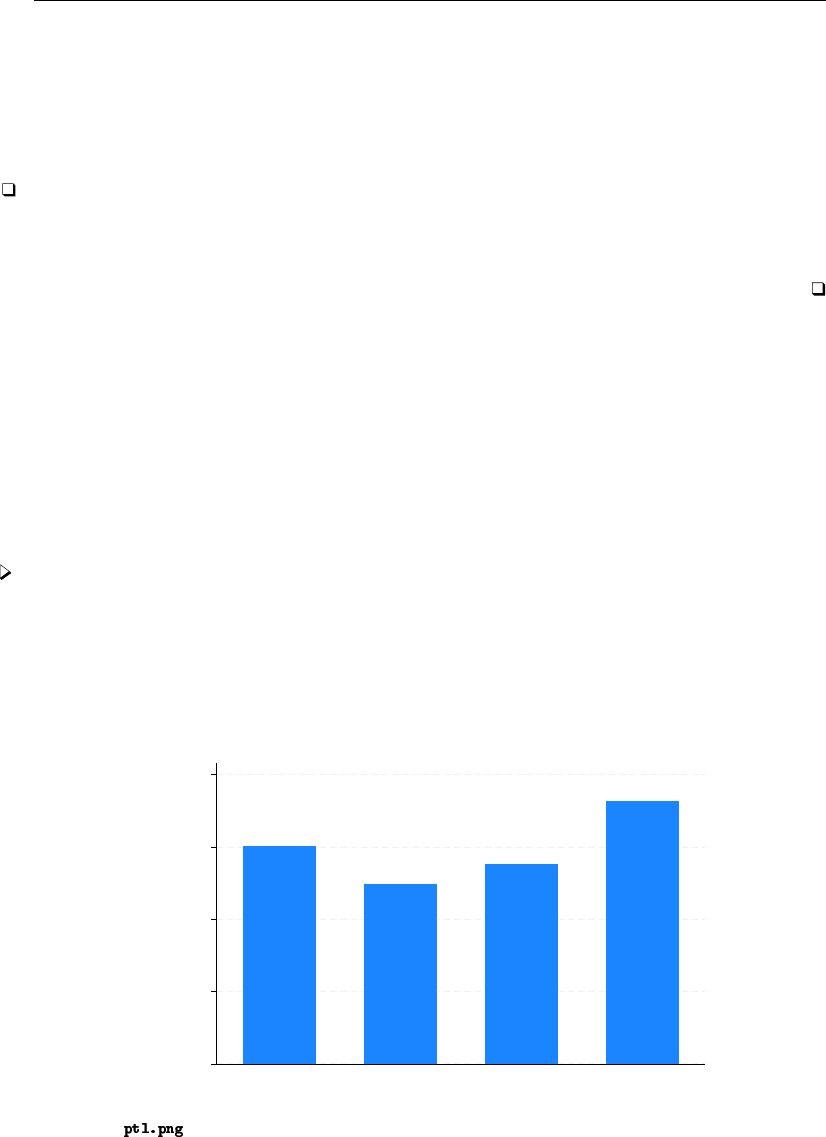
putdocx paragraph — Add text or images to an Office Open XML (.docx) file 13
Adding an image to the document
We can add any existing .png, .jpg, .dib, .emf, .bmp, .tif, and .svg image files to a .docx
file with putdocx image. For example, you could include a company logo. We can also add graphs
from Stata output. Because Stata graphs use the .gph extension, we must first use graph export to
convert the Stata graph to one of the supported image formats; see [G-2] graph export.
Technical note
When you add a .svg file to a .docx file using putdocx, an extra .png file is generated using
the original .svg file and embedded in the .docx file. This .png file is used to render the original
.svg file in viewers that do not support rendering .svg files.
By default, images are embedded in the file. If the image is embedded, it becomes a part of the
document and has no further relationship with the original image on the disk. We can instead link
the image by specifying the link option. Using linked images means that if the saved image file is
updated, then the linked image in the document will reflect the change.
If we add an image after text and want the paragraph that contains the image to have the same
format as the active paragraph, we insert the image with no additional step. However, when we
want to change the formatting or if there is no active paragraph, we must create one using putdocx
paragraph. Note that we do not need to declare a new paragraph to insert an image into the cell of
a table; see example 7 in [RPT] putdocx table.
Example 5: Export a Stata graph
Another probable factor of low birthweight is the mother’s history of premature labor. We have a
variable (ptl) that records the number of times a mother prematurely went into labor. Let’s add a
graph showing the mean birthweight separately for mothers who never went into premature labor and
those who went into premature labor once, twice, and three times. We use the graph bar command
followed by graph export to create a .png file.
. graph bar bwt, over(ptl) ytitle(Mean of birthweight)
0
1,000
2,000
3,000
4,000
Mean of birthweight
0 1 2 3
. graph export ptl.png
file saved as PNG format
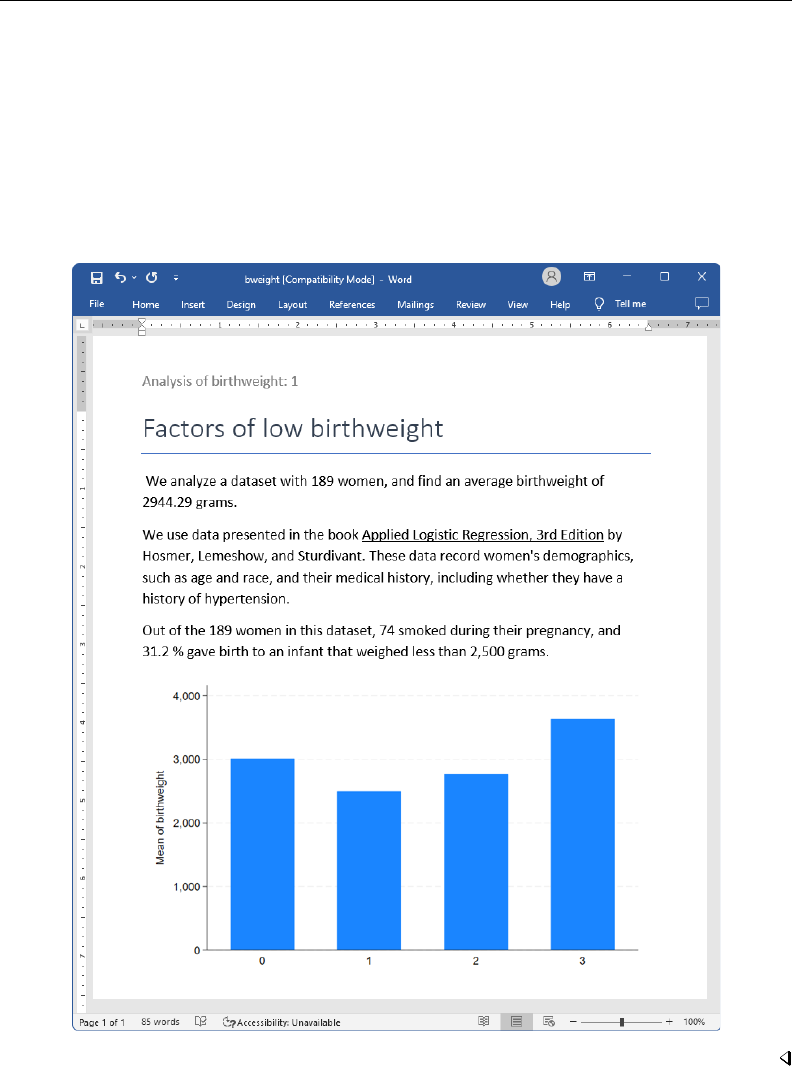
14 putdocx paragraph — Add text or images to an Office Open XML (.docx) file
Now we use putdocx image to add the .png file to a document. There is currently no active
paragraph, so we declare a new paragraph and specify the halign() option to center our image; by
default, paragraphs are left-aligned.
. putdocx paragraph, halign(center)
. putdocx image ptl.png
. putdocx save bweight, append
successfully appended to "C:/mypath/bweight.docx"
We append our active document, which includes the two text blocks along with this graph, to the
existing content of bweight.docx. Here is what the file contains:
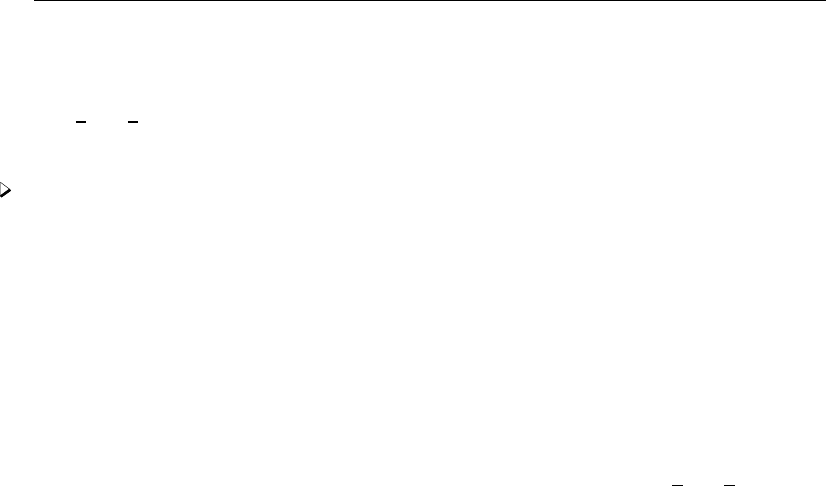
putdocx paragraph — Add text or images to an Office Open XML (.docx) file 15
Adding a bookmark to the document
When creating a large document, it can be helpful to add bookmarks to sections that you
will refer to throughout the document. You can add a bookmark with putdocx text or with the
<<dd docx display>> dynamic tag. Then, to link to the bookmark from other text, specify the
bookmarklink(bmname) option.
Example 6: Export a Stata graph with a bookmark
For example, suppose we plan to refer to the bar graph we created above in a later section of the
document. Let’s revise our code from the previous example as follows:
putdocx paragraph, halign(center)
putdocx image ptl.png, linebreak
putdocx text ("Figure 1. Birthweights and premature labor"), bookmark("bmark1")
We have now added a line break after the image and labeled it as “Figure 1”. We included the
bookmark("bmark1") option to add this text as a bookmark named bmark1. Below, we add a
heading for a section on medical history.
putdocx paragraph, style(Heading1)
putdocx text ("Medical history")
We can point to the bookmark with the following block of text. The <<dd docx display>>
dynamic tag allows us to specify text options such as bookmarklink() that apply to a portion of
the text within the textblock. Here we link the text “figure 1” to our bmark1 bookmark, and we save
our work.
putdocx textblock begin
In <<dd_docx_display bookmarklink("bmark1"): "figure 1">>, we see that the
average birthweight is greater for an infant whose mother has given birth
prematurely three times than it is for an infant whose mother has no history
of premature labor.
putdocx textblock end
putdocx save bweight, append

putdocx paragraph — Add text or images to an Office Open XML (.docx) file 17
Inserting text files in the document
There may be instances where you are building a document in pieces or where you are collaborating
with others to complete a project. For these situations, it may be useful to include previously created
text files in your .docx file with putdocx textfile. You can even specify the portion of the text
file that you want to include in your .docx file.
For example, let’s say our classmate wrote a section about the discovery of the effects of
smoking during pregnancy. We want to incorporate this in a birthweight report we have saved as
bweight2.docx. However, the text file he sent also includes a section on hypertension, which we
do not want to include. To add his text file to our document, excluding the section on hypertension,
we type the following in Stata:
putdocx begin
putdocx textfile smoke.txt, stopat(hypertension)
putdocx save bweight2, append
This tells Stata that whenever it comes across a line in the text file that contains the word
“hypertension”, it should exclude that line and anything that follows.
Also see
[RPT] putdocx intro — Introduction to generating Office Open XML (.docx) files
[RPT] putdocx begin — Create an Office Open XML (.docx) file
[RPT] putdocx collect — Add a table from a collection to an Office Open XML (.docx) file
[RPT] putdocx pagebreak — Add breaks to an Office Open XML (.docx) file
[RPT] putdocx table — Add tables to an Office Open XML (.docx) file
[RPT] Appendix for putdocx — Appendix for putdocx entries
[RPT] set docx — Format settings for blocks of text
Stata, Stata Press, and Mata are registered trademarks of StataCorp LLC. Stata and
Stata Press are registered trademarks with the World Intellectual Property Organization
of the United Nations. StataNow and NetCourseNow are trademarks of StataCorp
LLC. Other brand and product names are registered trademarks or trademarks of their
respective companies. Copyright
c
1985–2023 StataCorp LLC, College Station, TX,
USA. All rights reserved.
®
For suggested citations, see the FAQ on citing Stata documentation.

